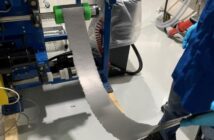Scientists at DOE Argonne have been attempting to resolve lithium-metal electrode problems since October 2008. Yet they are still only 8% along the road to overcoming stability, safety, and cycling-efficiency concerns holding back development. Their goal is a new generation of more powerful plug-in hybrid electric vehicles. But first, they must find a way to stop dendrites spreading inside lithium-metal electrodes.
Dendrites and Electrochemical Reactions

In biology, dendrites are connections like branches reaching out between cells, and sending electrochemical signals between them. Scientists think these are responsible for thought, by relating concepts in adjacent brain cells
Something conceptually similar happens inside lithium-metal electrodes. There. crystal dendrites spontaneously form, and grow like vines in every direction. In due course, they short circuit the battery so it is dead forever.
IUPUI Researchers Find Way to Stop Dendrites Spreading

Indiana and Purdue Universities share nanoscale and science expertise through their integrated Nanosystems Development Institute.
There, IUPUI scientists have concluded there is currently no way to stop dendrites spreading in lithium-metal electrodes.
They found a way to restrict them in a dense layer something like a well-cropped hedge instead. “We designed the working principle based on electroplating, and the experiment turned out to work exactly as designed … a rarity in my 35-year research career,” a lead researcher explains. “The possibilities for this application are numerous, and we feel the work can be further improved in the years to come.”
The applications could turn out immense indeed, now that we have a method to stop dendrites spreading. Lithium-metal electrodes have specific capacity eleven times greater than graphite-carbon ones. If we can commercialize their discovery, this could do wonders for transport and medical science. Not to mention longer-lasting laptops and cellphones too.
Related
Kudzu and the Galaxy Note 7 Problem
Electroplating Experiment: How to make a quarter look like a huge penny
Preview Image: Crystal Dentrites on a Snow Flake




